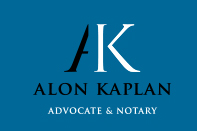
As a trustee, it’s essential to navigate inheritance laws with precision. Familiarize yourself with Israeli Inheritance Law, guarantee compliance by avoiding conflicts of interest, and manage assets strategically. Keep abreast of tax deadlines and file necessary forms to maintain compliance. Establish transparent communication with beneficiaries, keeping them informed and engaged. Tailor distribution plans to align with beneficiaries’ unique needs. Understanding these complexities can further enhance your ability to fulfill your fiduciary duties effectively.
Key Takeaways
- Understand and adhere to the specific inheritance laws applicable in the jurisdiction, such as Israel’s Inheritance Law of 1965.
- Ensure transparent communication with beneficiaries, providing updates and clarifying their rights and responsibilities under the trust.
- Regularly review and strategically manage trust assets to align with objectives and market conditions, ensuring beneficiary benefit.
- Maintain tax compliance by meeting filing deadlines, accurately calculating taxable income, and consulting tax professionals when needed.
- Assess beneficiary needs to develop adaptable distribution strategies that promote financial responsibility and align with individual circumstances.
Understanding Israeli Inheritance Law

Israeli inheritance law, primarily governed by the Inheritance Law of 1965, offers individuals significant freedom in distributing their assets through wills or other legal mechanisms. However, when there’s no will, intestate succession rules apply. This means that the law dictates the distribution of assets according to a specific hierarchy of heirs. Spouse rights hold a prominent place in this hierarchy, as spouses are first in line to inherit. They’re entitled to movable property and a substantial portion of the estate. If no children, siblings, or parents are present, spouses may inherit the entire estate. Understanding these principles is essential to effectively maneuvering inheritance processes and ensuring rightful distribution, especially in the absence of a will. Non-Israeli residents must include proof of asset existence alongside standard documents when filing succession petitions. The Inheritance Law is a critical component of Alon Kaplan’s expertise, as the firm specializes in trusts and estates, providing valuable guidance to clients navigating these legal frameworks.
Avoiding Conflicts of Interest
How can trustees effectively avoid conflicts of interest in their fiduciary roles? Start by recognizing self-dealing risks, such as using trust assets for personal gain. To mitigate these risks, guarantee transparency in all transactions and consult legal experts regularly. Favoritism prevention is essential, so establish clear, unbiased decision-making processes and adhere strictly to fiduciary duties. Regular audits and reviews can help identify potential breaches early. Trustees must be aware that California’s Trust Law prohibits them from creating conflicts of interest, ensuring that they do not use trust property for personal profit or purposes unrelated to the trust. Maintain open communication with beneficiaries, providing updates and reports to guarantee transparency and trust. Personal relationships shouldn’t influence decisions; always prioritize the trust’s best interests. By balancing personal and professional roles, you can avoid disputes and guarantee fair asset distribution. Ultimately, adhering to legal guidelines and ethical standards, such as those in International Taxation and Company Law, will help maintain trust and integrity.
Effective Asset Management Strategies

To manage trust assets effectively, begin by conducting a thorough inventory to understand the full scope of what you’re overseeing. Accurately categorize each asset type, whether it’s real estate, stocks, or bonds. Asset valuation is essential; seek professional appraisals for items that aren’t easily liquidated. Keep detailed records for transparency. One main advantage of Inheritance Trusts is their ability to shield assets from creditors during the beneficiary’s financial hardships. Once you have a clear understanding, develop a strategic asset allocation plan. This should align with the trust’s objectives and needs of the beneficiaries. Portfolio diversification is key—balance equities, fixed income, and real estate to manage risk and return. Regularly reassess values and rebalance the portfolio to respond to market changes. Always consider liquidity needs to guarantee funds are available for distributions and expenses. In Israel, understanding the historical and legal context of trusts can provide additional insights into managing trusts effectively.
Ensuring Tax Compliance
Although managing a trust involves various responsibilities, guaranteeing tax compliance is essential to avoid potential legal and financial repercussions. You must pay close attention to tax deadlines, filing IRS Form 1041 and any necessary additional forms, like gift or estate tax returns. Filing on time prevents penalties and interest. Determining the trust’s taxable income accurately is vital, involving calculations of interest, dividends, and capital gains. Properly compute Distributable Net Income to allocate taxable amounts between the trust and beneficiaries. Guarantee timely tax payments to avoid financial burdens from late fees. Consider available tax deductions to reduce the trust’s tax liability. Consulting with tax professionals can help navigate complex requirements, guaranteeing accurate filings and maintaining compliance with tax laws. It’s important to understand the Law of Trust governing trusts in Israel, especially for international families residing there. Trustees must also adhere to state laws, such as the California Probate Code, which govern their fiduciary responsibilities and ensure the proper administration of trust assets.
Transparent Communication With Beneficiaries

Effective communication with beneficiaries is essential for the successful administration of a trust, ensuring transparency and building trust between you and the beneficiaries.
Establish clear communication channels by designating specific methods, like email or secured portals, for beneficiary engagement. Provide initial notifications upon accepting trusteeship, including your contact details, and set expectations for communication frequency and types of updates.
Regularly provide transparent updates on the trust’s status, asset valuations, and any significant changes. Use communication strategies that simplify complex legal and financial information, translating jargon into simple language and utilizing visual aids. By establishing clear channels and maintaining transparency, you can prevent misunderstandings and foster a positive relationship with beneficiaries. Trustees should also be aware of trusts in prime jurisdictions as they may influence the administration and compliance requirements of the trust.
Educate beneficiaries on their rights and responsibilities under the trust. Implement proactive conflict prevention strategies by anticipating concerns and maintaining open, impartial communication to resolve potential disputes effectively.
Navigating Legal and Regulatory Requirements
Steering through the legal and regulatory requirements of trusteeship is a critical responsibility, demanding diligence and a thorough understanding of fiduciary duties. As a trustee, you’re obligated to act in good faith, prioritize beneficiaries’ interests, and adhere to trust regulations. Compliance with the trust document is non-negotiable, ensuring you respect beneficiaries’ inheritance rights. Managing trust assets requires prudent investment decisions, balancing growth with risk. Trustees are required to account for trust activities to beneficiaries, which underscores the importance of transparency and accountability. Maintaining accurate financial records and regular updates to beneficiaries underscores transparency. Avoid conflicts of interest by making impartial decisions, seeking professional advice when necessary. Legal compliance extends to timely tax filings and detailed financial reporting.
Tailoring Distribution Plans for Beneficiary Needs

When developing distribution plans for beneficiaries, it’s important to take into account their individual needs and circumstances to guarantee the effective management and allocation of trust assets. Understanding beneficiary profiles plays a significant role in this process. Tailored plans should consider financial needs, personal circumstances, and future goals. Distribution flexibility is key, allowing you to adapt to life events like graduation or marriage. The contingent beneficiary clause ensures that property distribution aligns with individual wishes even if the original beneficiary cannot inherit.
Consider these strategies:
- Discretionary Trusts: Offer trustees the ability to decide when and how much to distribute, ensuring assets are protected and appropriately allocated.
- Staggered Distributions: Release funds at specified ages, promoting financial maturity and responsibility.
- Incentive Trusts: Encourage beneficiaries to achieve certain goals, providing distributions as rewards for accomplishments.
Frequently Asked Questions
How Can Trustees Handle Disputes Among Beneficiaries Effectively?
You can handle disputes among beneficiaries effectively by employing dispute resolution strategies and beneficiary communication techniques.
Start with open communication, ensuring all parties understand the trust terms. Use mediation to facilitate fair discussions, preventing misunderstandings.
Keep beneficiaries informed with regular updates, promoting transparency. Documentation of all decisions and actions is essential, offering clarity and evidence of compliance with fiduciary duties.
Consult legal experts when necessary to navigate complex disputes and uphold responsibilities.
What Are the Best Practices for Maintaining Accurate Trust Records?
Think of trust recordkeeping as weaving a tapestry; every thread must be in its place for the picture to remain clear.
Maintain accurate documentation by detailing all transactions, specifying assets, amounts, and recipients.
Separate personal and trust funds to prevent confusion. Organize documents systematically, ensuring they’re up-to-date.
Document all trustee actions and decisions. Comply with legal and tax requirements to safeguard against future disputes or audits, preserving records meticulously.
How Should Trustees Approach Risk Management in Investment Decisions?
When approaching risk management in investment decisions, you should focus on risk assessment and portfolio diversification.
Conduct independent reviews to objectively assess investment strategies and use tools to identify potential risks.
Diversify your portfolio by spreading investments across various asset classes like stocks, bonds, and real estate to mitigate risks.
Regularly evaluate investment performance and adjust strategies to align with market conditions, ensuring compliance with fiduciary standards and legal requirements.
What Steps Can Be Taken to Ensure Beneficiary Education on Trust Matters?
To guarantee beneficiary education on trust matters, consider organizing beneficiary seminars that are as enlightening as a thousand suns.
Conduct trust workshops to explain financial responsibilities and trust operations clearly.
Provide detailed materials outlining trust structures, roles, and expectations.
Encourage active participation, fostering an environment where beneficiaries feel empowered to ask questions.
Regular updates and clear communication strategies will enhance understanding, guaranteeing beneficiaries are well-informed and confident in trust management.
How Do Trustees Balance Business Oversight With Other Fiduciary Duties?
To balance business priorities with fiduciary responsibilities, you should prioritize prudent investment strategies that align with beneficiaries’ interests while guaranteeing compliance with legal standards.
Regularly assess risk management to avoid speculative ventures and maintain transparency through detailed reporting.
Seek professional guidance when necessary, and guarantee communication with beneficiaries is clear and consistent.
Conclusion
As you navigate the intricate pathways of inheritance laws, think of yourself as a modern-day Odysseus, steering through potential legal challenges and emotional complexities. By understanding the nuances of Israeli inheritance law, managing assets wisely, and maintaining open communication with beneficiaries, you guarantee a fair and equitable distribution. Prioritize compliance with tax regulations and tailor distribution plans to meet beneficiaries’ needs, guaranteeing harmony and fulfillment of your fiduciary duties. Your diligence will uphold the integrity of your trustee role.

